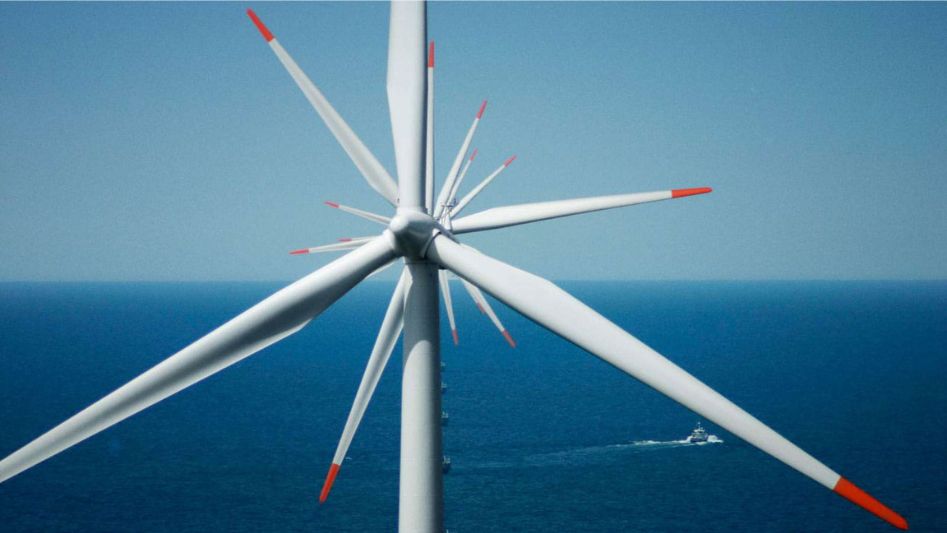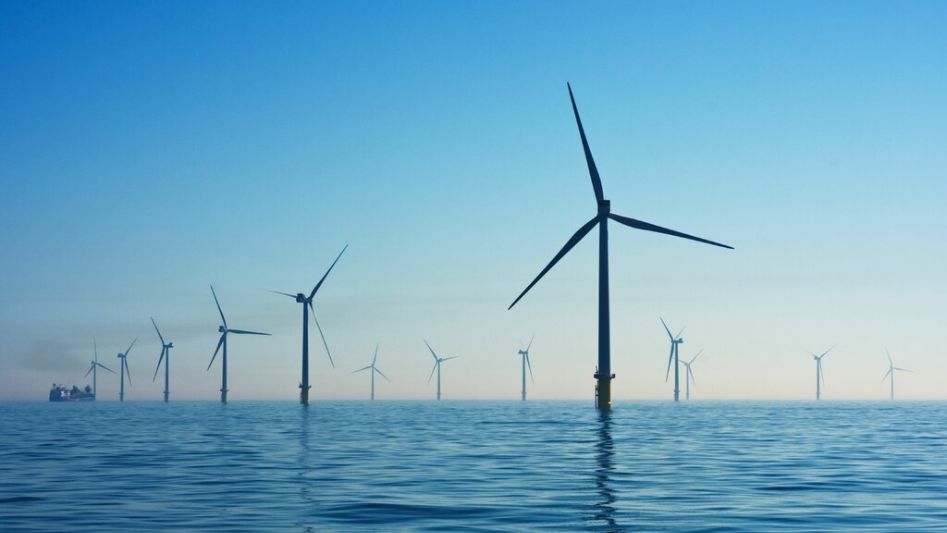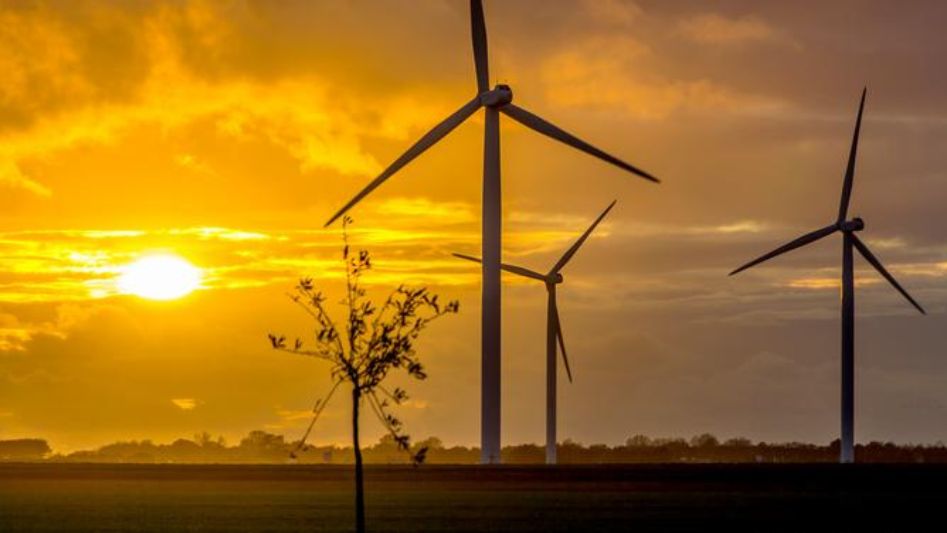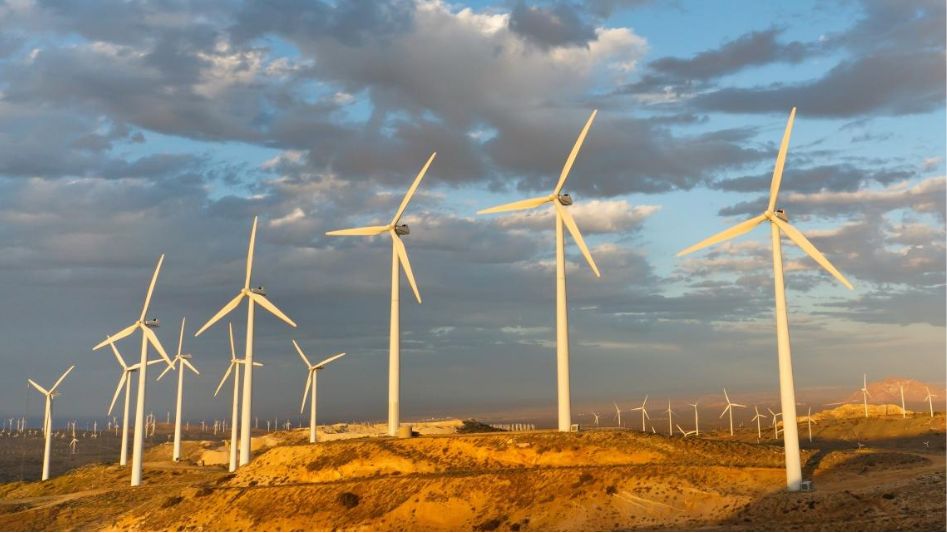Wind Energy: Frequently Asked Questions is a concise, easy-to-understand guide to wind energy. It can be used to help combat climate change and support local economies.
Table Of Content
- Does wind power help in the fight against climate change?
- Are investments in wind power technology on the rise?
- Does wind power help rural economies?
- Does wind power create jobs?
- What benefits do wind farms bring to the local area?
- Is wind energy a good value for money?
- Does the variability of wind render it relatively inefficient as an energy source?
- Is wind power eligible to receive energy incentives?
- How long does it take for a wind turbine to balance out the carbon emissions caused by its production?
- Are wind turbines recycled?
- How long does a wind farm last on average? What happens when a turbine comes to the end of its useful life?
- Do wind turbines ruin the landscape?
- Do wind turbines cause noise pollution?
- Do wind power facilities pose a risk to human health?
- Do wind turbine blades create problems for migrating birds?
- Do wind power facilities have any impact on wildlife?
- Conclusion
- FAQ
- You May Also Like
- External Links
Wind power will account for more than one-third of the world’s energy supply by the year 2050. Wind technology not only makes an essential contribution to the battle against climate change, but it also bolsters local economies by providing employment and assisting the communities that host wind farms. This is because wind farms provide clean energy, which helps reduce greenhouse gas emissions. The following information should address any questions that you may have had about this sustainable kind of energy.

Does wind power help in the fight against climate change?
Yes. In contrast to coal or gas-fired power plants, wind farms do not release greenhouse gases into the atmosphere. In 2019, wind energy production alone prevented 198 million tons of CO2 from entering the atmosphere. Additionally, wind energy production reduced the consumption of water, which is frequently required for fossil-fuel power plants to function. According to the International Renewable Energy Agency (IRENA), the expansion of wind power, in conjunction with an increase in electrification, could contribute up to a quarter of the reduction in CO2 emissions necessary to achieve the goal established by the Paris Agreement by the year 2050. This reduction is necessary in order to meet the target.
Are investments in wind power technology on the rise?
Despite the challenges presented by COVID-19, the International Energy Agency (IEA) estimates that wind generating capacity will reach 65 GW in the year 2020. This is an increase of 8% in comparison to 2019. Additional expansion is anticipated for the year 2021, when capacity is anticipated to reach 68 GW, and overall capacity may reach as high as 100 GW by the year 2025. The International Renewable Energy Agency (IRENA) predicts that by the year 2050, wind turbine technology will have advanced to the point where it will be able to generate more than a third of the world’s total energy supply (35%). This is due to the fact that improvements in turbine technology will make the price of wind power increasingly competitive.
Does wind power help rural economies?
The vast majority of wind farms may be found in more rural locations since this allows the landowners there to make extra money while still keeping their property in use for agricultural reasons. Landowners may profit from a consistent supplemental income by charging rent for the use of their property. This enables them to pass on their companies to subsequent generations even in the event that prices for raw materials become unpredictable. In this manner, wind power may become an additional source of revenue, complementing that which can be created via farming or other activities.
Does wind power create jobs?
The International Renewable Energy Agency (IRENA) estimates that the global wind power industry might employ more than six million people by the year 2050. This figure is six times higher than the number of people who are employed in the industry at the present moment. Over one hundred thousand people are already employed in the wind energy industry in the United States alone, and the position of “wind turbine technician” is quickly becoming one of the vocations in the nation that is expanding at the quickest rate.
What benefits do wind farms bring to the local area?
Wind farms have almost instantaneous positive effects on the surrounding community and economy. A good example of this is employment: jobs are created through spin-off activities that are generated and guaranteed by each of the project phases, beginning with the initial development and continuing all the way through the construction and maintenance of the facilities. This ensures that jobs will be available.
Is wind energy a good value for money?
Although wind can be found virtually everywhere on Earth, we are aware of the areas in which it blows the hardest and most consistently, and we are able to utilize this knowledge to put turbines in the areas of the planet that are ideal for doing so. The conversion of wind energy into usable power has already achieved an acceptable level of performance, with an efficiency level that ranges between 40 and 50 percent, which is quite near the theoretical maximum that is feasible. As a result of advancements in technology, wind power is currently one of the most affordable forms of energy that can be harnessed, with prices in certain places falling to less than two cents per kilowatt-hour.
Does the variability of wind render it relatively inefficient as an energy source?
The unpredictability of customer demand, which shifts during the course of the day, is already managed by the grid that distributes electric power. Wind power contributes just a little bit to the overall variability of the energy system when looked at from the perspective of generation. As a result of demand response programs, the bulk of the fluctuations in wind energy output in many areas are neutralized by opposing variations in the amount of power that is required or in other supply sources. This is the case in a number of locations. Modern wind farms are able to provide network services that are comparable in terms of dependability to those provided by traditional fossil-fuel power plants because of the advanced electronic monitoring equipment that is used at these facilities. In addition, developments in energy storage technology are making it possible for operators to smooth out variations in renewable energy supply without resorting to the burning of fossil fuels. This is a significant advantage.
Is wind power eligible to receive energy incentives?
Public incentives are provided or made available for the production of all types of energy, including fossil fuels, natural gas, coal, nuclear power, and renewable sources. In general, fossil fuels have been given a far larger number of tax breaks and other benefits than renewable energy sources. According to the Nuclear Energy Institute, between 1950 and 2010, 70% of all energy subsidies went to fossil fuels, either in the form of tax credits or as a component of other programs, while less than 3% went to wind power. These subsidies were distributed across a variety of schemes.
How long does it take for a wind turbine to balance out the carbon emissions caused by its production?
Wind power plants have very low costs of both installation and operation when compared to those of other types of energy generation. The construction of a wind farm does, however, result in the release of a certain quantity of carbon emissions in addition to other greenhouse gases. According to studies, the typical lifetime of a wind turbine is 30 years, during which time it will provide emission-free power and have offset the carbon footprint it created during the first five to seven months of operation. It is anticipated that levels of carbon dioxide emissions would drop even lower as a result of advances in technology and the electrification of transportation.
Are wind turbines recycled?
At the moment, 90 percent of the vast majority of wind turbine components can be recycled. However, here at Enel Green Power, we are actively working with other industrial groups, universities, manufacturers, and suppliers to develop commercial-scale solutions to sustainably manage turbine blades once they have reached the end of their useful lives. Some examples of these solutions include recycling the blade materials to make glass fiber pellets or for other industrial applications or reusing the blades to create new ones. Additionally, the organization is among those who are playing a leadership role in moving these initiatives forward in the quest for additional options for the reuse and recycling of turbine blades after they have reached the end of their useful lives.

How long does a wind farm last on average? What happens when a turbine comes to the end of its useful life?
Our wind farms have a usable life expectancy of at least 30 years on average, and this time frame may be extended even further by repowering projects. A producer of wind energy may either repower a facility by updating the components of a turbine or decommission a facility by dismantling all of the facility’s components and restoring the land to its natural condition. The leasing agreements that Enel Green Power has with landowners contain deactivation terms that require us to pay the expenses of any required restoration of the project area. These clauses are included to safeguard the landowners.
Do wind turbines ruin the landscape?
A wind power facility must first be able to pass the various environmental impact studies that are carried out by the local authorities. These studies are designed to evaluate the effects and impacts, including visual effects, that the facility will have on the surrounding landscape, and the facility must take any necessary actions to remedy or, if at all possible, avoid these effects.
Do wind turbines cause noise pollution?
All wind turbines are designed to conform to the criteria set out in IEC 61400/1, which defines permissible noise level ranges. The mechanical noise that is produced by wind power facilities has been reduced and improved wherever it is possible to do so thanks to a series of solutions that have been implemented to reduce the acoustic impact. These solutions include the installation of purpose-built devices on the blades, such as serrations or dinotails. Furthermore, wind turbines are installed a minimum of 300 meters away from any housing, which means that any “swishing” noise produced by the rotation of the blades is approximately 43 decibels. This noise drops to 38 decibels at a distance of 500 meters, which is lower than the noise level of a refrigerator.
Do wind power facilities pose a risk to human health?
No medical or scientific study that has ever been subjected to peer review has ever shown a correlation between the presence of wind turbines and adverse effects on human health. In fact, making the switch to renewable energy sources will prevent further emissions of carbon and other air pollutants that are known to cause problems for public health; it will also reduce the consumption of water that is typically required to enable fossil-fuel power stations to function. These emissions and other air pollutants are known to cause problems for public health.
Do wind turbine blades create problems for migrating birds?
It is possible for birds and bats to become caught in the blades of the turbines, but every company in the industry collaborates closely with environmental organizations and organizations devoted to the preservation of these species in order to find a solution to this potential issue. This collaborative initiative serves to protect bird and bat populations by increasing understanding about the habits of these species, which in turn lowers the effect that collisions between birds and bats have on those populations. Instruments that employ sound, radar, and thermal imaging are used to keep the wildlife safe. In addition, in order to be in compliance with the environmental regulations that apply to operators of wind power facilities, all facilities are required to monitor the impact on birds and other animals, in addition to the impact on vegetation. They are also required to make a commitment to measure these impacts and report them on an annual basis. The existence of wind-generating facilities in a region makes it feasible to increase wildlife monitoring in that area by virtue of the presence of such facilities.
Do wind power facilities have any impact on wildlife?
Wind energy contributes to the preservation of a healthy ecosystem in which all animals may live. Wind power contributes to the improvement of air and water quality for all forms of wildlife by reducing the emissions of harmful fossil fuels. Most groups that care about the environment and wildlife are in favor of wind power. In order to build facilities that hurt wildlife as little as possible, we do in-depth research on the habits and patterns of wildlife.
Conclusion
Wind energy is going to be a significant factor in determining whether or not the European Union achieves its goals for the generation of renewable energy. However, the research and development resources now being put into wind energy are not adequate, on any level, to address the energy issues that the EU is currently facing.

FAQ
What is the most significant issue with wind energy?
When compared to traditional power plants, wind farms have different effects on the environment. However, people still worry about the noise the turbine blades make and how they look on the landscape.
What are three problems associated with wind energy?
Unpredictability is one of the primary drawbacks of wind energy, as is the fact that it poses a risk to many forms of wildlife, generates low-level noise, is not visually pleasant, and that there are only a select few places that are appropriate for the installation of wind turbines.
How effective is the use of wind power?
In general, a wind turbine has an efficiency of roughly 30–45%, although this may increase to 50% when there is a strong wind. If wind turbines worked perfectly, the speed of the wind would go down to zero as it went through the turbine.
You May Also Like
- What Is The Swept Area Of A VAWT?
- Wind-Powered Cargo Ships: How Do They Work?
- The Future of Wind Turbines? No Blades
- What Is A Vertical Axis Wind Turbine (VAWT)?
- What Are Wind Turbine Blades Made Of? Could They Be Recycled?

